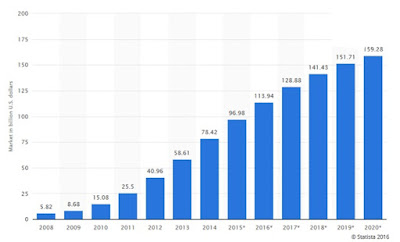Twitter Feed
Microsoft vs Google in Cloud Computing
Many took note of the Randall Stross essay in the New York Times last weekend. In it he succintly described why Microsoft is failing in it’s attempt to bridge the…
IBM at Forrester IT Forum
At the Forrester IT Forum yesterday in Las Vegas, Rick Lechner, VP Enterprise Systems at IBM, made the following comments The changing face of globalization (transformation from exporting to multi-nationals…
HP & EDS
In an interesting take on his Enterprise Architecture blog, Chris Pearson sees the HP acquisition of EDS as a ploy by HP to remain relevant in a cloud computing world.…
The Library of National Intelligence (LNI) – A Possible Cloud Application
In the MAZZ-INT Blog a couple of weeks ago, Joe Mazzafro artile on “Intelliigence and the Concept of Customer” stated that a “realistic business model for the IC to assume…
Net-Centric Enterprise Services – An Update
Net-Centric Enterprise Services (NCES) is about to enter the initial operational test and evaluation phase. NCES are a set of capabilities that support network-centric warfare operations and information sharing. It…
Microsoft Renews Yahoo Bid
Microsoft renews Yahoo bid and is now offering to buy a piece of Yahoo. I believe this is just the opening of the second round. Follow me at https://Twitter.com/Kevin_Jackson
Cloud Computing Risk
CIO.com reviewed the top three concerns that the IT executives have regarding the adoption of cloud computing – security, latency, and SLA. These concerns seem similar to those previously assigned…
Grid vs. Cloud – May 17, 2008
From Geva Perry’s April 25th blog Cloud Computing overtaking the term Grid Computing With the term “cloud computing” rapidly being hyped everywhere, I did this little exercise on Google Trends…
Blogsphere Clouds – May 16, 2008
The cloud is billowing in the blogsphere !! Virtual Computing in the Cloud — How a Universal Dialtone Will …Virtual Cloud Computing represents the next wave of virtualization and offers…
Gartner on Cloud Computing / Yahoo vs. Icahn- May 15, 2008
Gartner thinks that cloud computing may be the next big thing: By 2012, 80 percent of Fortune 1000 enterprises will pay for some cloud computing service and 30 percent of…
- Enable cloud service arbitrage based on cost, performance or operational need;
- Help companies migrate operations to the cloud and assist with staff augmentation and training;
- Provide cloud service auditing and SLA monitoring services;
- Help in focusing and managing organizational cloud service demand;
- Provided toolsets to assist in the migration and integration of enterprise applications; and
- Help in change management and the selection and integration of other managed services.
By automating and operationalizing the governance of cloud services, CSBs can efficiently multi-source services and augment them with third party metering and monitoring. Using CSBs, organizations also accelerate their transition to hybrid IT models. This marketplace is typically segmented type of services: cloud brokerage and cloud brokerage enablement, wherein cloud brokerage enablement is further segmented into internal and external brokers. When used internally, cloud enablement platforms helps enterprises adopt the new hybrid IT and multi-sourced operating model. By building organic expertise, companies can personalize IT service consumption and unify
IT service delivery through the use of a corporate self-service store, a dynamic service marketplace, and continuous delivery. This centralized, supply chain approach unifies the order, execution, and management of multi-sourced solutions across legacy and cloud resources, by centrally delegating and tracking execution.
(This post was brought to you by IBM Global Technology Services. For more content like this, visit Point B and Beyond.)
( Thank you. If you enjoyed this article, get free updates by email or RSS – © Copyright Kevin L. Jackson 2016)
Cloud Computing
- CPUcoin Expands CPU/GPU Power Sharing with Cudo Ventures Enterprise Network Partnership
- CPUcoin Expands CPU/GPU Power Sharing with Cudo Ventures Enterprise Network Partnership
- Route1 Announces Q2 2019 Financial Results
- CPUcoin Expands CPU/GPU Power Sharing with Cudo Ventures Enterprise Network Partnership
- ChannelAdvisor to Present at the D.A. Davidson 18th Annual Technology Conference
Cybersecurity
- Route1 Announces Q2 2019 Financial Results
- FIRST US BANCSHARES, INC. DECLARES CASH DIVIDEND
- Business Continuity Management Planning Solution Market is Expected to Grow ~ US$ 1.6 Bn by the end of 2029 - PMR
- Atos delivers Quantum-Learning-as-a-Service to Xofia to enable artificial intelligence solutions
- New Ares IoT Botnet discovered on Android OS based Set-Top Boxes



